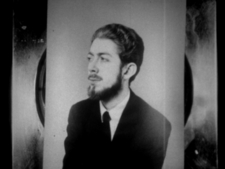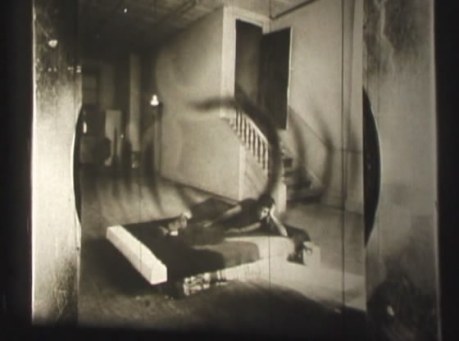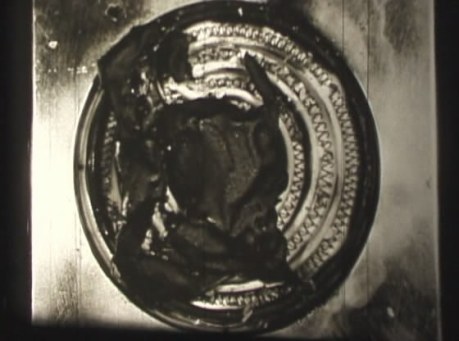(nostalgia)
March 29, 2009
I’ve been thinking and reading a bit about experimental film recently. Text is generally more prominent in experimental film than in other modes of filmmaking, especially once sound began regularly assisting in conveying narrative.
Experimental cinema is also often understood as being in dialogue with, responding to, rejecting more conventional modes of narrative filmmaking. Indeed, one of the main things that experimental cinema generally experiments with is narrative.
If narrative cinema uses parentheses in screenplays to indicate nonverbal or unspoken elements of a film, it might not be surprising if one were to find that in efforts to foreground processes of production (which certainly include writing), parentheses, along with the cues inside them, would take on marked roles in experimental cinema and screenwriting. Su Friedrich, for example, has an interesting short screenplay, “(Script) for a Film without Images,” which is just dialogue for a conversation.
And perhaps the most notable example would be Hollis Frampton’s 30-minute (nostalgia). In this film, Frampton takes a group of photographs from his past and, one by one, burns them on a boiler plate. As we watch each one melt, a narrator, Michael Snow, narrates a story about the following image, as if he were the photographer of the image, effecting a doubly disjunctive cinematic experience.

This 1971 film is a canonical work of experimental filmmaking, raising questions about the essence of cinema–the relationships between words, sound, and images, and between memory and truth. But one question I’m not sure that has been asked–and given the significance of written text and words for Frampton, it is especially worth asking–is why is the film’s title in parentheses?
For one, they signify displacement, which happens in the narration, both on the level of the voice speaking someone else’s first-person, and on the level of the discrepancy between the image seen and the image being described.
Visually, an explanation might be found in the placement of the photographs on the boiler plate. As in the above image from the film, the photographs generally sit on the plate so that the visible part of the plate in the film resembles two parentheses enclosing an image that is perhaps too big for it to really contain. As the plate burns the image, a series of the plate’s rings begin to leave concentric parenthetical burning marks upon the image.

Eventually, as the plate continues burning the image, the outer sides of the plate do contain the photograph but lose definition as visual parentheses because the image disappears. One could certainly then read the title (nostalgia) as a stand-in for the film’s main visual motif: if the “nostalgia” is in the photograph, the parentheses are the fire in which the nostalgia vanishes, which themselves only reliably exist when the image of the memory is still discernible.
